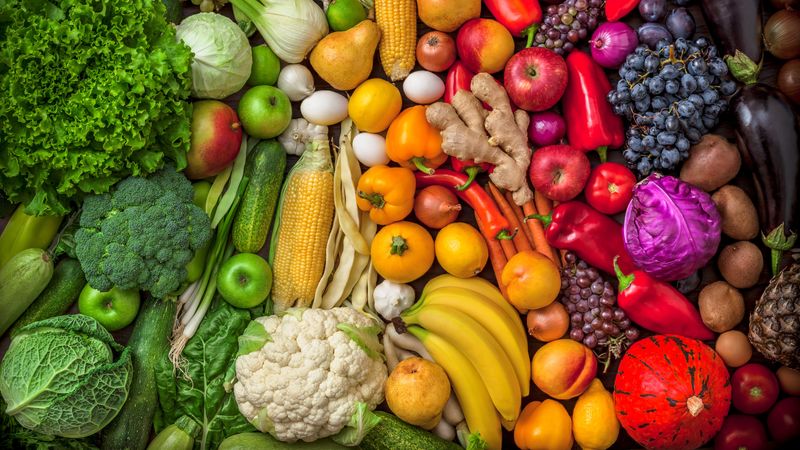In April 2016, at the height of his profession in Silicon Valley, San Francisco-based totally Vivek Shah decided to quit his task and return to India. His spouse Brinda who holds a Master’s in Printmaking, “Living in San Francisco, made us loads greater aware of our environment. Being full-time specialists ourselves, we started out realizing how our way of life fluctuated in the direction of turning bad due to our schedules,” says Vivek. The couple’s first step to take fee in their fitness was to begin studying to cook dinner collectively.
“And, one of our biggest struggles was, we didn’t know where in the food we were eating every single day was coming from,” shares Vivek. The location the couple resided in became complete with tall fruit-bearing trees. It reminded Vivek of his youth while lifestyles became less difficult. Climbing bushes barefoot, scraping your knees and arms, and the joy of plucking fruit off after devouring them. He desired to make that joy a part of his existence again, and developing their meals became how they thought they might take pleasure in it again. The couple embarked on an adventure to study permaculture ideas in a kingdom near California. It turned into this journey that bolstered their remedy to go back to India and set up their farm.

“When traveling for the path, we came through a strawberry discipline. While playing with the view, we noticed someone wearing a white shielding jumpsuit spraying some liquid onto the plants. It sent a sit back down our spines. Imagine if the employees had to put on a protective layer to save you the side outcomes of their spraying chemicals; we had been ingesting the meals grown like that. It now affected the consumers, the growers, and the environment. This becomes our turning factor.”
2016 the duo ended their jobs and returned to their domestic kingdom, Gujarat.
Interestingly, there has been no competition. Their households were supportive of their preference and past glad that the couple had determined to come home. “We had no historical past in agriculture. But the course we did helped us immensely in the know-how of the diverse strategies we may want to undertake to build a herbal and sustainable farm. We decided to kickstart our adventure by first developing what we appreciated to devour. Being Gujjus, it needed to be mangoes,” he laughs. In 2017, an hour and a half pressure away from Ahmedabad,
they bought a ten-acre land positioned on the outskirts of Nadiad, Central Gujarat, to create a farm that would not handiest satisfy the needs of their kitchen and cause them to be unbiased of the market but also take in industrial operations. And that’s how Brindavan befell. From ensuring soil fertility with green manuring strategies and managing to graze to harvesting rainwater thru pits and ditches, the duo practice strategies that help them utilize the farm assets to their maximum potential.
From pearl millet (bajra), wheat, potatoes, moringa, bananas, papaya, and Jamun to wood, the couple grows crops that range from industrial to semi-business. A blend of commercial and experimental farming, some of their other techniques, including plug nurseries, no-until vegetable farming, planting windbreaks, chook-loving plants, and butterfly and bee-loving flowers, are directed toward pest and soil control in some manner or the other.
They have dug trenches and pits on 10 in line with the general land to capture each drop of rainwater on the ten-acre farm. This ensures that every proper monsoon cycle helps harvest 5 to 10 lakh liters of water.
The duo also built a herbal home with soil, cow dung, and stone. The ground used to construct the earth partitions of this home changed into additionally sourced from the farm itself when they dug a pond. One of the reasons to explore this pond was to tackle the problem of effluent water that a nearby contractor became letting into the sector. “We were stunned because we were trying out high-quality to let now not any shape of chemical enter our farm. We determined to address this by amassing this water in a pond.
We lined the pond with water-purifying plants that would take away the impurities before it reached the pond, capturing 1.5 to two lakh liters of water.” Aiming to turn this pond into a flora and fauna pond, Brinda and Vivek will quickly introduce fish and geese. Vivek is also running on constructing a larger water-remedy plant that might, in the end, increase into a secondary enterprise. Instead of using insecticides or concoctions to hold pests at bay,
the couple uses fundamental natural pest control strategies at the farm, like developing aromatic plant life consisting of tulsi, lemongrass, and so forth, at the outer boundaries of the sector. This helps creates protective protection and hold fruit flies and pests at bay. Another technique to ensure that pest assaults do not motivate entire loss is intercropping or multi-cropping, which is developing two or more plants on an equal piece of land. To ensure that no unmarried leaf on the farm is burned, all farm waste is processed to make compost.
